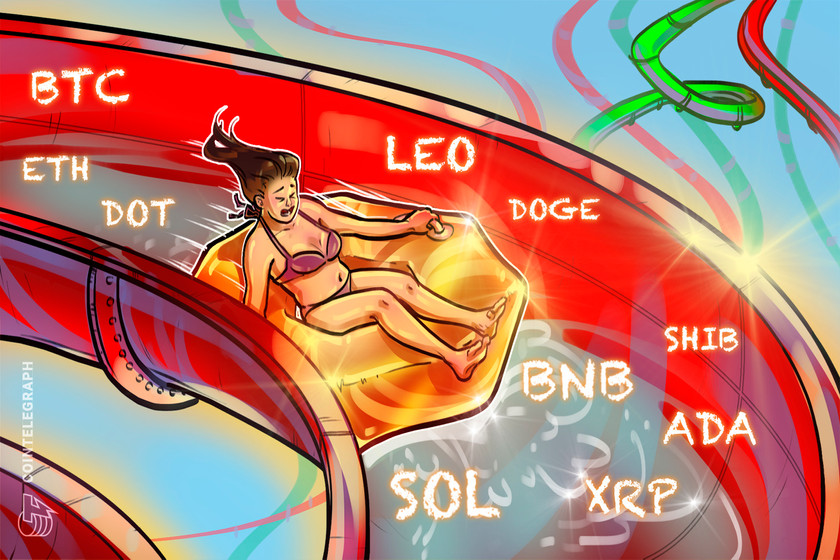Ethereum traders gauge fakeout risks after 40% ETH price rally



Ether price could drop by 45% because its ascending triangle breakout looks unconvincing so far.
Ethereum’s native token Ether (ETH) saw a modest pullback on July 17 after ramming into a critical technical resistance confluence.
Merge-led Ethereum price breakout
ETH’s price dropped by 1.8% to $1,328 after struggling to move above two strong resistance levels: the 50-day exponential moving average (50-day EMA; the red wave) and a descending trendline (black) serving as a price ceiling since May.


Previously, Ether rallied by over 40% from $1,000 on July 13 to over $1,400 on July 16. The jump appeared partly due to euphoria surrounding “the Merge” slated for September.
Meanwhile, a golden cross’s appearance on Ethereum’s four-hour chart also boosted Ether’s upside sentiment among technical analysts.
#ETH/USD
We got a bullish cross between 200 & 50 moving averages on 4h
Looking for more upside locally pic.twitter.com/WnGY19khnK
— Albert III (@AlbertcryptoN) July 15, 2022
ETH price risks fakeout
Ether’s 40%-plus price rally since July 13 also had its price break above a critical horizontal resistance that somewhat constitutes an “ascending triangle pattern.”
Ascending triangles are typically continuation patterns. But in some cases, ascending triangles can also appear at the end of a downtrend, thus leading to a bullish reversal.
Scott Melker, an independent market analyst, considered ETH’s bullish exit out of its prevailing ascending triangle pattern as a sign that it would rally further. He said:
“A break above $1,284 should send prices flying, as there’s almost no resistance until the $1,700s.”
Ether has already broken above $1,284 and is in a breakout zone. Nonetheless, its close above the ascending triangle’s upper trendline has not accompanied a rise in trading volumes. That suggests a weakening upside momentum, i.e., a fakeout.


Therefore, ETH’s price risks a reversal toward the triangle’s upper trendline near $1,284 as support. The ETH/USD pair could retain its bullish bias if it rebounds from $1,284 with convincing volumes and breaks above the resistance confluence as discussed above.
Related: Lido DAO most ‘overbought’ since April as LDO price rallies 150% in two weeks — what’s next?
Conversely, a break below $1,284 would risk re-activating the ascending triangle setup with a bias skewed toward bears. As a result, ETH would risk crashing to $750, according to a rule of technical analysis as illustrated below.


That means a 45% decline from current price levels.
The views and opinions expressed here are solely those of the author and do not necessarily reflect the views of Cointelegraph.com. Every investment and trading move involves risk, you should conduct your own research when making a decision.


























































